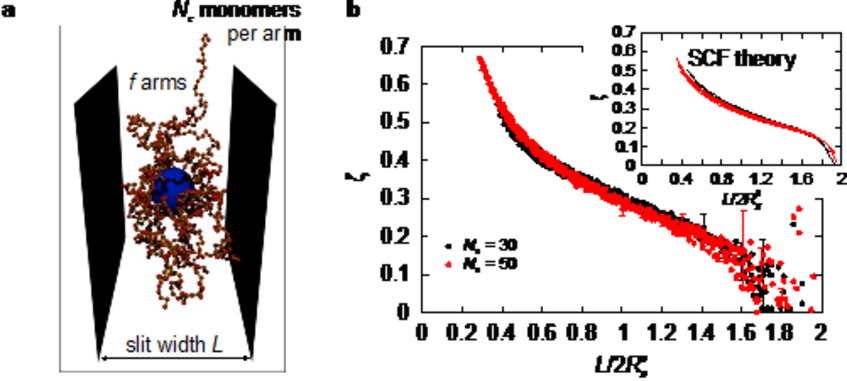Elasticity of responsive microgels and magnetic gels

Fig. 1: A polymer brush confined between two walls (left panel) udergoes a relative deformation ζ which is a universal function of the identation (right panel) and it can be described by generic elastic models [1].
Elasticity of responsive microgels and magnetic gels
Soft, mesoscopically-sized colloids made out of polymeric material are systems that have attracted a lot of attention, due to their responsiveness to external stimuli, the adaptivity of their shape to extenral confinement and to the rich variety of self-assembly scenarios they represent. In most cases, the effective interactions between such colloids are represented in terms of additive pair potentials, whose validity at high concentrations becomes questionable. An alternative approach, recently put forward by Riest et al. [1], is to represent them as elastic spheres characterized by two parameters: the compressibility and the Poisson ratio. The approach has been successfully applied to spherical polymer brushes of varying functionality (number of arms) f, see Fig. 1.
[1] J. Riest et al., Sci. Rep. 5, 15854 (2015).
